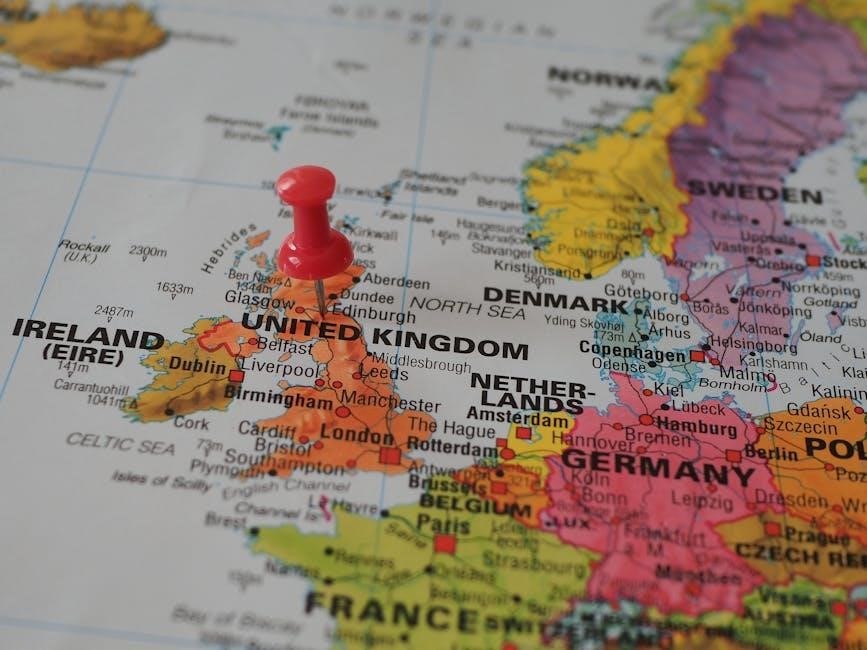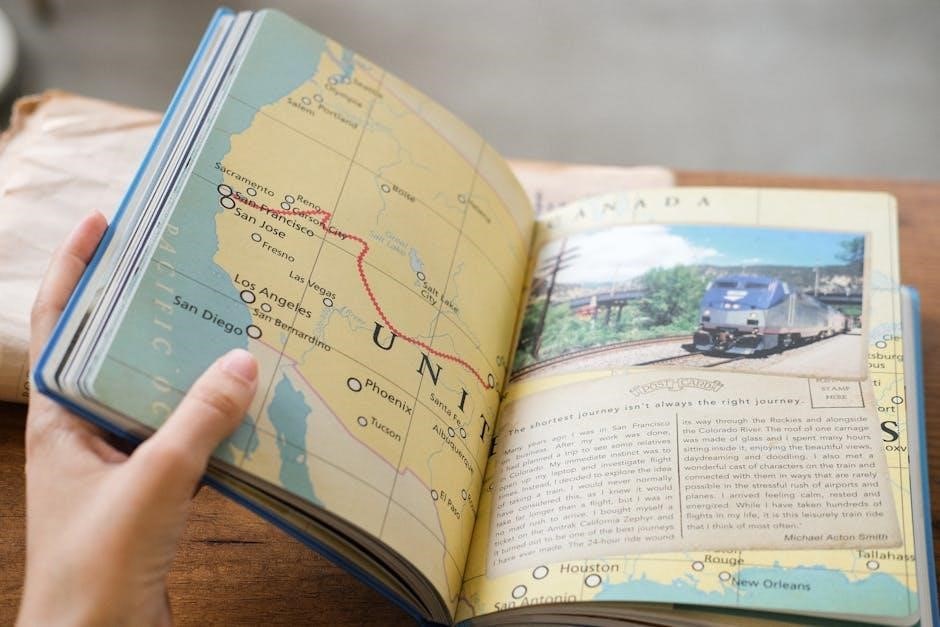unit 1: the global tapestry exam study guide

This study guide covers developments in East Asia from 1200 to 1450, focusing on key regions, trade networks, and cultural shifts. It includes flashcards, practice questions, and strategies to help students master the material effectively.
By examining interconnectedness and historical context, students gain a deeper understanding of globalization and cultural exchange during this period, preparing them for the AP World History exam with confidence and clarity.

1.1 Developments in East Asia from c. 1200 to c. 1450
During this period, East Asia experienced significant transformations, particularly in China and Japan. The Song Dynasty (960–1279) laid the foundation for technological and cultural advancements, while the Yuan Dynasty (1271–1368), established by Kublai Khan, introduced Mongol rule and facilitated cross-regional trade. The Ming Dynasty (1368–1644) later restored Chinese dominance, fostering a golden age of maritime exploration and cultural refinement.
In Japan, the Kamakura (1185–1333) and Muromachi (1336–1573) periods saw the rise of the samurai class and the development of a feudal society. Buddhism and Shinto coexisted, shaping cultural and spiritual life. Korea, under the Goryeo Dynasty (918–1392), faced Mongol invasions but maintained its independence, contributing to regional trade and cultural exchange.
- The Song Dynasty’s innovations in agriculture, metallurgy, and printing revolutionized society.
- Mongol invasions disrupted regional stability but also connected East Asia to global trade networks.
- Confucianism remained a cornerstone of societal values, influencing education and governance.
These developments highlight the dynamic interplay of political, cultural, and technological forces in shaping East Asia’s history during this era.
1.2 Key Regions and Civilizations
During the period from c. 1200 to c. 1450, several key regions and civilizations played significant roles in shaping global history. East Asia, dominated by China, experienced the rise and fall of dynasties such as the Song, Yuan, and Ming. Japan, under the Kamakura and Muromachi shogunates, saw the emergence of a feudal society centered on the samurai class. Korea, during the Goryeo Dynasty, maintained its cultural identity despite Mongol invasions.
The Islamic world, spanning from the Middle East to North Africa and Spain, was a hub of cultural and intellectual advancements. Cities like Baghdad, Cairo, and Córdoba became centers of learning and trade. In Africa, the Mali and Songhai empires flourished, while in Europe, the Byzantine Empire and the rising nation-states of France and England shaped regional dynamics.
- China: Song, Yuan, and Ming dynasties.
- Japan: Kamakura and Muromachi periods.
- Korea: Goryeo Dynasty.
- Islamic world: Abbasid Caliphate, Al-Andalus, and Mamluk Sultanate.
- Africa: Mali and Songhai empires.
- Europe: Byzantine Empire and medieval kingdoms.
These regions and civilizations were interconnected through trade, cultural exchange, and conflict, forming a complex global tapestry during this era.
1.3 Major Trade Networks
The period from c. 1200 to c. 1450 saw the expansion and intensification of major trade networks that connected various regions of the world. The Silk Road, a vast network of routes across Eurasia, remained a vital conduit for the exchange of goods, ideas, and cultures between East Asia, the Islamic world, and Europe. Merchants traded luxury items such as silk, spices, porcelain, and precious metals, while technologies like the compass and gunpowder spread along these routes.
Maritime trade flourished in the Indian Ocean and Southeast Asia, with ports like Quanzhou, Malacca, and Calicut serving as hubs for commerce. The Mongol Empire facilitated trade across Central Asia, linking Europe and China more closely. In Africa, the trans-Saharan trade connected the Mediterranean region with West Africa, exchanging gold, salt, and enslaved people.

These networks not only facilitated economic exchange but also promoted cultural and religious diffusion, shaping the interconnectedness of the pre-modern world. Understanding these trade systems is crucial for analyzing the dynamics of globalization during this era.
1.4 Cultural and Religious Developments
From c. 1200 to c. 1450, cultural and religious developments shaped the identities of civilizations across the globe. In East Asia, Buddhism and Confucianism continued to influence societal values, while the spread of Islam transformed regions like the Middle East, North Africa, and parts of South Asia. The Mongol Empire, in its expansion, facilitated religious tolerance and cultural exchange, allowing for the blending of traditions. For instance, the synthesis of Islamic and Hindu practices in India and the spread of Christianity in Europe reflected the dynamic nature of religious evolution.
Cultural advancements were also evident in art, literature, and architecture. The Song Dynasty in China saw innovations in porcelain and calligraphy, while the Islamic Golden Age produced renowned scholars and scientific breakthroughs. These developments underscored the interconnectedness of cultures, as ideas and practices spread through trade and migration. Understanding these cultural and religious shifts is essential for grasping the complexities of this transformative period in world history.
1.5 Key Terms and Concepts
Mastering key terms and concepts is crucial for understanding the global tapestry of developments from c. 1200 to c. 1450. Terms like Song Dynasty, Buddhism, and filial piety highlight the cultural and religious foundations of East Asia. The Mongol Empire and Silk Road emphasize the significance of trade networks and imperial expansion. Neo-Confucianism and samurai reflect the intellectual and military developments in China and Japan, respectively. Understanding feudalism and its variations across regions provides insight into societal structures. Key concepts such as porcelain, calligraphy, and Marco Polo illustrate the cultural and economic exchanges that defined this era. Additionally, terms like kamikaze and Ming Dynasty offer a glimpse into the political and military shifts that shaped the period. These terms and concepts are essential for analyzing the interconnectedness of the world during this transformative time.
1.6 Study Strategies for the Exam
To excel in the AP World History exam, employ effective study strategies tailored to Unit 1. Begin by creating a detailed study plan, focusing on key regions, trade networks, and cultural developments. Use flashcards to memorize terms like Song Dynasty, Buddhism, and filial piety. Practice analyzing primary sources and historical documents to strengthen your critical thinking skills. Engage in active reading by underlining and annotating important concepts in your textbook. Dedicate time to reviewing past exam questions to familiarize yourself with the format and content. Participate in study groups to discuss complex topics and clarify doubts. Utilize online resources, such as Quizlet, to reinforce your understanding of key terms and concepts. Lastly, prioritize understanding over memorization by connecting historical events to broader themes like globalization and cultural exchange. By combining these strategies, you’ll be well-prepared to tackle the exam with confidence and clarity.
1.7 Flashcards for Unit 1
Create flashcards to master key terms and concepts from Unit 1. Start with terms like Song Dynasty, Buddhism, and filial piety, including definitions and historical context. Add terms such as Mongol Empire, Silk Road, and Confucianism, linking them to their roles in East Asian developments. Include Neo-Confucianism, Zheng He, and tribute system to cover cultural and political aspects. Use the back of each card to explain how these concepts connect to broader themes like globalization and trade. For example, define gunpowder and its impact on warfare, or moveable type and its influence on knowledge dissemination. Incorporate historical figures like Marco Polo and their roles in facilitating cultural exchange. Organize cards into categories, such as Key Terms, Major Trade Networks, and Cultural Developments, for focused study. Use digital tools like Quizlet or create physical cards for easy revision. Regularly test yourself to ensure retention and understanding of the material.
1.8 Practice Questions and Answers
Test your understanding of Unit 1 with these practice questions and answers. Examples include:
- Multiple-choice: What was the primary impact of the Mongol Empire on East Asia?
Answer: The Mongols facilitated trade and cultural exchange while establishing a vast, centralized empire. - Short-answer: Explain the significance of the Silk Road during this period.
Answer: The Silk Road connected East Asia with other regions, fostering trade, cultural exchange, and the spread of religions like Buddhism. - Essay question: Analyze the role of maritime trade in East Asia from 1200 to 1450.
Answer: Maritime trade, led by figures like Zheng He, expanded economic and cultural ties, showcasing Chinese naval power and fostering regional interconnectedness.
Use these questions to assess your knowledge and identify areas for further study. Practice regularly to build confidence for the exam.
1.9 Review of AP World History Unit 1
This review summarizes the key themes and developments covered in Unit 1 of the AP World History curriculum, focusing on the period from c. 1200 to c. 1450. The unit emphasizes the interconnectedness of civilizations, particularly in East Asia, and the global impacts of trade, culture, and empire-building.
Students should focus on understanding the rise and influence of the Mongol Empire, the significance of the Silk Road, and the cultural advancements of the Song Dynasty. Maritime trade, led by figures like Zheng He, also played a crucial role in shaping regional and global connections.
Key concepts include the diffusion of ideas, technologies, and religions, as well as the challenges posed by environmental and political factors. To excel, students should analyze primary sources, practice essay prompts, and memorize key terms and dates.
Regular review of study guides, flashcards, and practice questions will help reinforce understanding. By mastering these elements, students will be well-prepared to tackle the AP exam and demonstrate a strong grasp of this foundational period in world history.
1.10 Historical Context and Interconnectedness
Understanding the historical context and interconnectedness of civilizations from c. 1200 to c. 1450 is crucial for mastering Unit 1. This period saw the rise of global networks, with the Mongol Empire playing a central role in connecting East Asia, the Middle East, and Europe through trade and cultural exchange.
The Silk Road and maritime trade routes facilitated the movement of goods, ideas, and technologies. For instance, the spread of Buddhism, Islam, and Christianity highlights the religious interconnectedness of the time. Additionally, the Mongols’ political dominance and their tolerance of diverse cultures allowed for cross-cultural interactions that shaped global dynamics.
Interconnectedness also led to challenges, such as the spread of diseases like the Black Death, which underscored the vulnerabilities of a globally connected world. By analyzing these connections, students can better grasp how historical events influenced one another and laid the foundation for modern global interactions.

1.11 Vocabulary and Phrases for Success
Mastering key vocabulary and phrases is essential for excelling in Unit 1 of the AP World History exam. Terms like filial piety, virulent, and interconnectedness are critical for understanding cultural and historical contexts. Phrases such as “analyze the impact of” or “compare and contrast” will help structure responses effectively.
Students should familiarize themselves with terms related to trade networks, religious developments, and state-building strategies. Additionally, phrases like “during this period” and “as a result” can enhance essay coherence. Flashcards and active recall are recommended for vocabulary retention.
Practicing essay prompts with these phrases ensures clarity and precision. By integrating these terms and phrases into study routines, students can articulate their knowledge confidently and achieve success on the exam.
1.12 Final Exam Preparation Tips
To excel in the final exam for Unit 1, create a structured study plan focusing on key regions, trade networks, and cultural developments. Allocate time for active recall, self-testing, and essay practice to ensure mastery of the material.
Utilize flashcards for vocabulary and concepts, and review practice questions to familiarize yourself with common exam formats. Engage in group discussions or teach the material to others to reinforce understanding. Additionally, analyze past exams to identify recurring themes and refine your essay-writing skills.

On exam day, arrive well-rested and mentally prepared. Skim through all questions before answering to manage time effectively. Focus on clear, concise responses that address all parts of the question. By combining thorough preparation with strategic exam-taking techniques, you can confidently tackle the challenges of Unit 1.